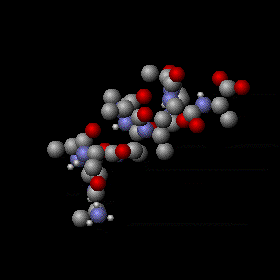Molecular physics
Molecular physics is a branch of physics that explores the physical properties of molecules and the chemical bonds between atoms that bind them. The field overlaps significantly with quantum chemistry, though it places more emphasis on the experimental aspects and the application of quantum mechanics to molecules. Molecular physics is crucial for understanding the physical basis of chemistry, material science, and molecular biology.
Overview[edit | edit source]
Molecular physics focuses on the study of molecules, their electronic structure, vibrational, rotational, and nuclear spin states, and how these properties influence the interactions and reactions of molecules. It employs various spectroscopic techniques, such as infrared spectroscopy, microwave spectroscopy, and Raman spectroscopy, to study these properties and the dynamics of molecules.
Key Concepts[edit | edit source]
Molecular Structure[edit | edit source]
The structure of a molecule is determined by the arrangement of its atoms and the chemical bonds that hold them together. The VSEPR theory and molecular orbital theory are fundamental in predicting and explaining the geometry and electronic structure of molecules.
Chemical Bonds[edit | edit source]
Chemical bonds, including ionic bonds, covalent bonds, and metallic bonds, are the forces that hold atoms together in molecules. The strength and type of chemical bonds affect the physical and chemical properties of the resulting molecule.
Spectroscopy[edit | edit source]
Spectroscopy is a critical tool in molecular physics for probing the energy levels of molecules and their transitions. Techniques such as NMR spectroscopy (nuclear magnetic resonance), UV/Vis spectroscopy (ultraviolet/visible spectroscopy), and X-ray spectroscopy are used to gain insights into the structure, dynamics, and environment of molecules.
Applications[edit | edit source]
Molecular physics has a wide range of applications, including the development of new materials, pharmaceuticals, and nanotechnology. It also plays a crucial role in environmental science, where it helps in understanding atmospheric molecules and pollutants, and in astrophysics, aiding in the identification of molecules in interstellar space.
Research and Development[edit | edit source]
Research in molecular physics is continually advancing our understanding of molecules and their interactions. Recent developments include the use of lasers to control chemical reactions, the study of molecular machines, and the exploration of quantum coherence in photosynthesis.
See Also[edit | edit source]
Search WikiMD
Ad.Tired of being Overweight? Try W8MD's physician weight loss program.
Semaglutide (Ozempic / Wegovy and Tirzepatide (Mounjaro / Zepbound) available.
Advertise on WikiMD
|
WikiMD's Wellness Encyclopedia |
| Let Food Be Thy Medicine Medicine Thy Food - Hippocrates |
Translate this page: - East Asian
中文,
日本,
한국어,
South Asian
हिन्दी,
தமிழ்,
తెలుగు,
Urdu,
ಕನ್ನಡ,
Southeast Asian
Indonesian,
Vietnamese,
Thai,
မြန်မာဘာသာ,
বাংলা
European
español,
Deutsch,
français,
Greek,
português do Brasil,
polski,
română,
русский,
Nederlands,
norsk,
svenska,
suomi,
Italian
Middle Eastern & African
عربى,
Turkish,
Persian,
Hebrew,
Afrikaans,
isiZulu,
Kiswahili,
Other
Bulgarian,
Hungarian,
Czech,
Swedish,
മലയാളം,
मराठी,
ਪੰਜਾਬੀ,
ગુજરાતી,
Portuguese,
Ukrainian
Medical Disclaimer: WikiMD is not a substitute for professional medical advice. The information on WikiMD is provided as an information resource only, may be incorrect, outdated or misleading, and is not to be used or relied on for any diagnostic or treatment purposes. Please consult your health care provider before making any healthcare decisions or for guidance about a specific medical condition. WikiMD expressly disclaims responsibility, and shall have no liability, for any damages, loss, injury, or liability whatsoever suffered as a result of your reliance on the information contained in this site. By visiting this site you agree to the foregoing terms and conditions, which may from time to time be changed or supplemented by WikiMD. If you do not agree to the foregoing terms and conditions, you should not enter or use this site. See full disclaimer.
Credits:Most images are courtesy of Wikimedia commons, and templates, categories Wikipedia, licensed under CC BY SA or similar.
Contributors: Prab R. Tumpati, MD


